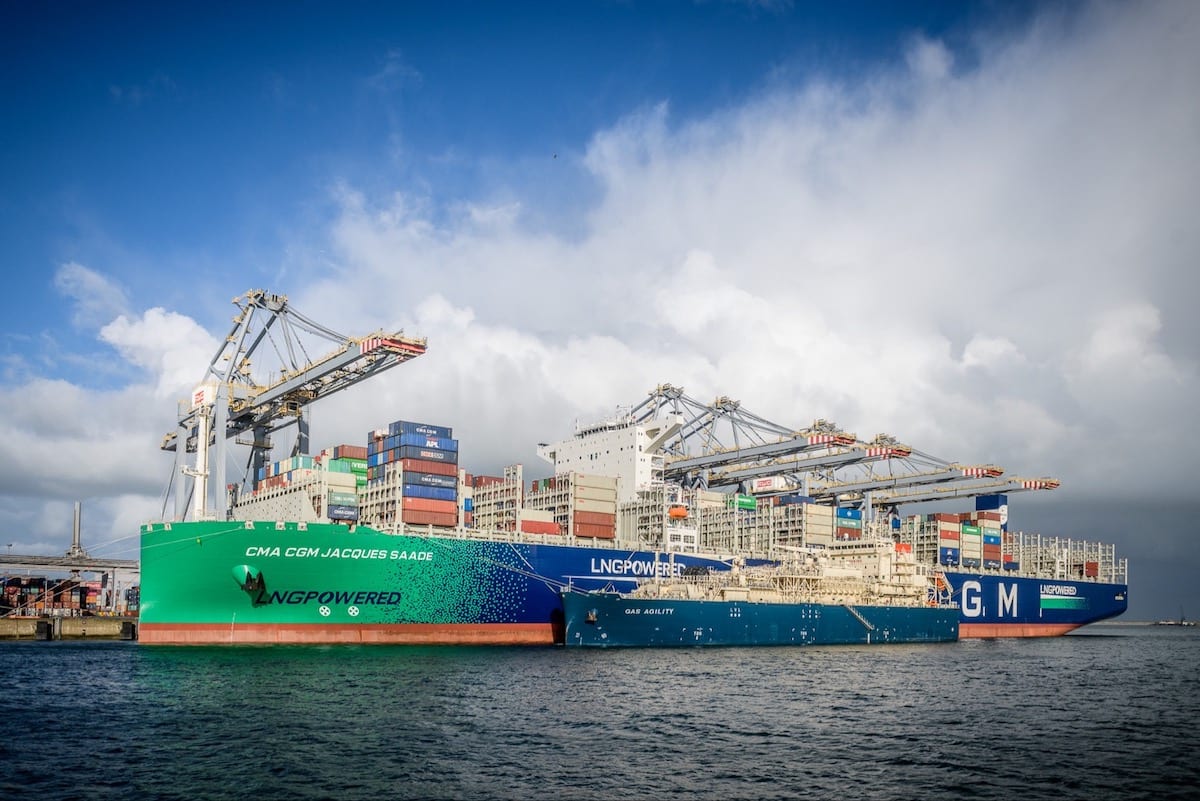The Oliver Hazard Perry-class guided-missile frigate USS Rodney M. Davis (FFG 60), top, and the Royal Brunei Navy Darussalam-class offshore patrol vessel KDB Darulaman (PV 08) participate in Cooperation Afloat Readiness and Training (CARAT) Brunei 2014. U.S. Navy Photo
By Sharon Chen and Norman P. Aquino
(Bloomberg) — The U.S. and Japan are conducting separate military drills with the Philippines near the disputed South China Sea, signaling support for the country as China builds out reclaimed reefs in the waters.
The annual CARAT Philippines joint exercise started Monday off the east coast of Palawan island and will run until June 26, according to U.S. Navy spokesman Arlo Abrahamson. The Philippine and Japanese navies are holding drills around the same island through June 27, Japan’s Maritime Self-Defense Force said last week.
The U.S. has backed Southeast Asian nations including the Philippines as tensions escalate with China over territorial claims in the South China Sea, while Japan is providing patrol vessels to the Philippine coast guard. Closer to home, Philippine President Benigno Aquino has rallied neighbors to more aggressively respond to China’s efforts to enforce its claims to 80 percent of the waters.
“This year’s exercise reflects more than two decades of increasingly complex training ashore, at sea and in the air,” said Abrahamson.
The drill includes a sea phase with the littoral combat ship USS Fort Worth, diving and salvage ship USNS Safeguard and a P-3 Orion surveillance aircraft and at least one Philippine frigate, according to the U.S. Navy. It’s the first time a littoral combat ship has taken part in CARAT Philippines.
Japan’s exercises with the Philippines will take place adjacent to the Spratly Islands, where China has created more than 2,000 acres of land in waters also claimed by the Philippines, Vietnam, Brunei, Taiwan and Malaysia. Japan will send a P-3C anti-submarine, maritime surveillance aircraft and 20 personnel.
Land Construction
Tensions in the area have risen recently with China warning planes and ships away from reefs where it is reclaiming land. The Fort Worth had an encounter last month with a Chinese ship – – it was reportedly followed by a frigate — and a U.S. surveillance plane was repeatedly warned by radio to divert from its path near the reefs.
“We prefer to look at it as a strategy of regional stability and less of defense,” U.S. Rear Admiral William Merz, commander of Task Force 74, told reporters on Palawan in response to a question about how the drills may boost the Philippines’ ability to defend territory. “We have a lot of history that these types of exercises, working with our allies, tend to lead to a very stable environment in the areas we were.”
‘Necessary’ Needs
China will construct facilities to meet “necessary” military needs and various civilian needs, after it finishes reclamation in the near term, its Foreign Ministry said in a statement this month. The construction doesn’t target any nation and won’t affect navigation or aviation freedom, it said.
Protecting freedom of navigation in the disputed waters resonates in the region because the South China Sea hosts more than $5 trillion of shipping each year and is home to about a 10th of the world’s annual fishing catch.
China criticized drills involving more than 11,000 soldiers from the Philippines, U.S. and Australia near the contested islands in April. The expanded war games were inappropriate and ran counter to efforts to ease tensions, the state-run Global Times said at the time.
About 600 sailors and marines are taking part in the latest exercise, according to the Philippine navy.
“The intent of CARAT is enhancing capabilities, navy-to- navy capabilities, increasing interoperability,” Rear Admiral Leopoldo Alano, commander of the Philippine Fleet, told reporters on Monday on Palawan. “These can be used both in wartime missions or missions other than war.”
–With assistance from Isabel Reynolds in Tokyo.
©2015 Bloomberg News
Unlock Exclusive Insights Today!
Join the gCaptain Club for curated content, insider opinions, and vibrant community discussions.

 Join The Club
Join The Club













